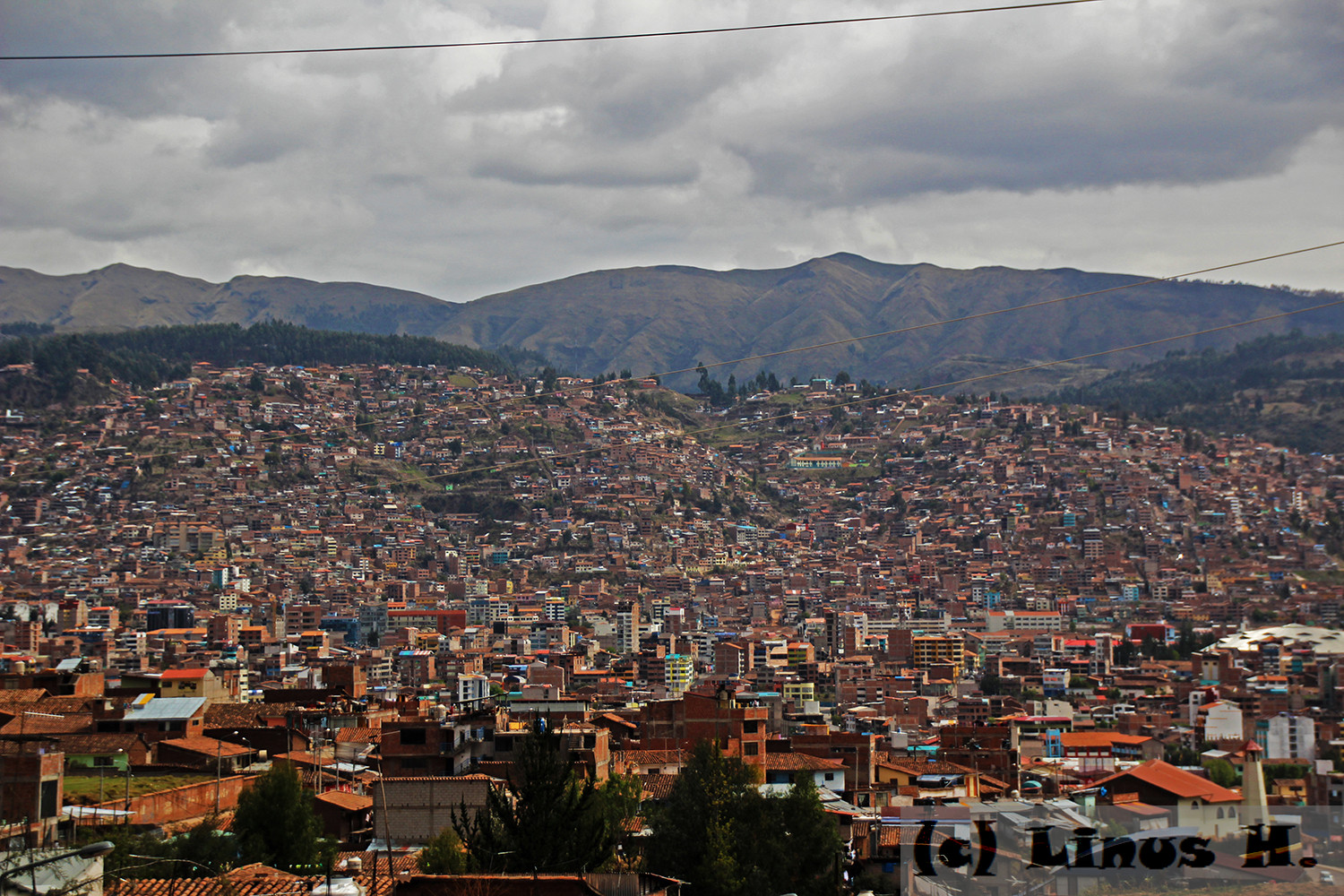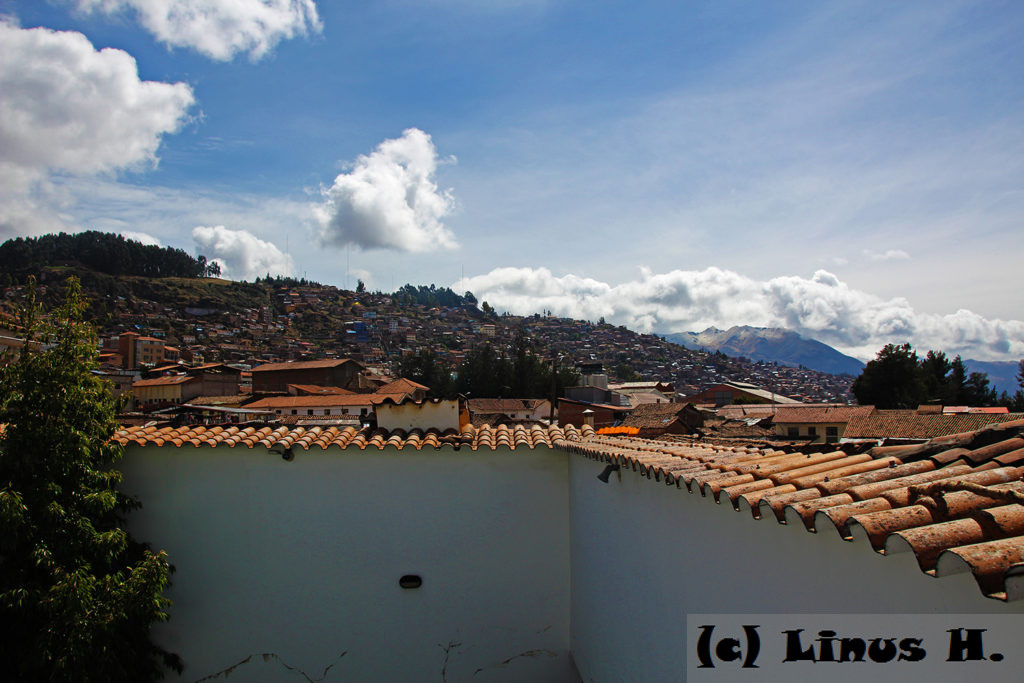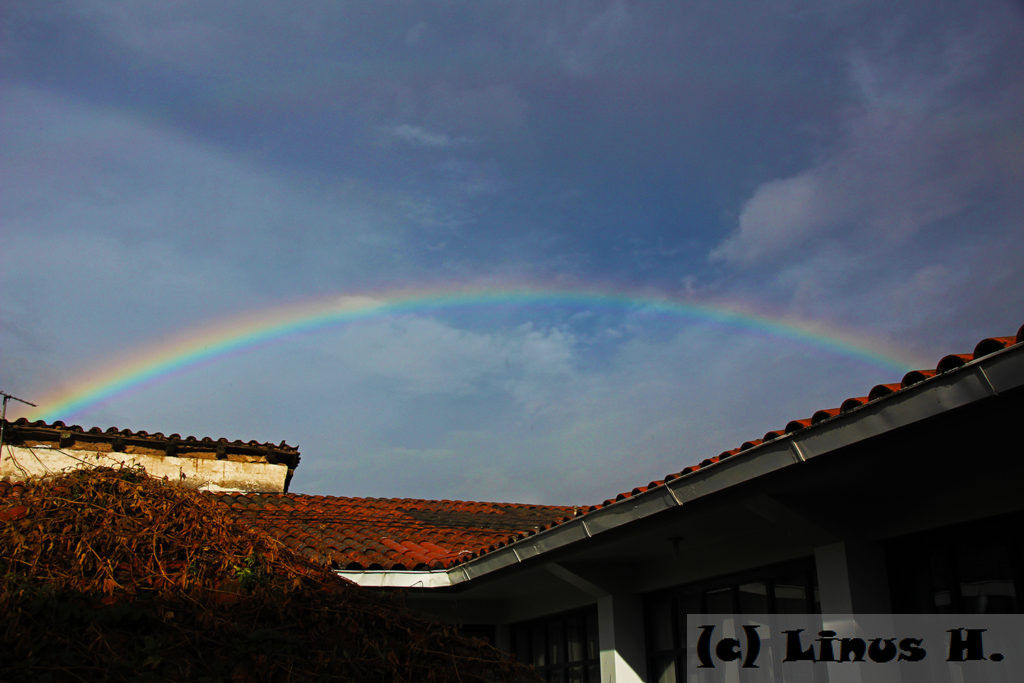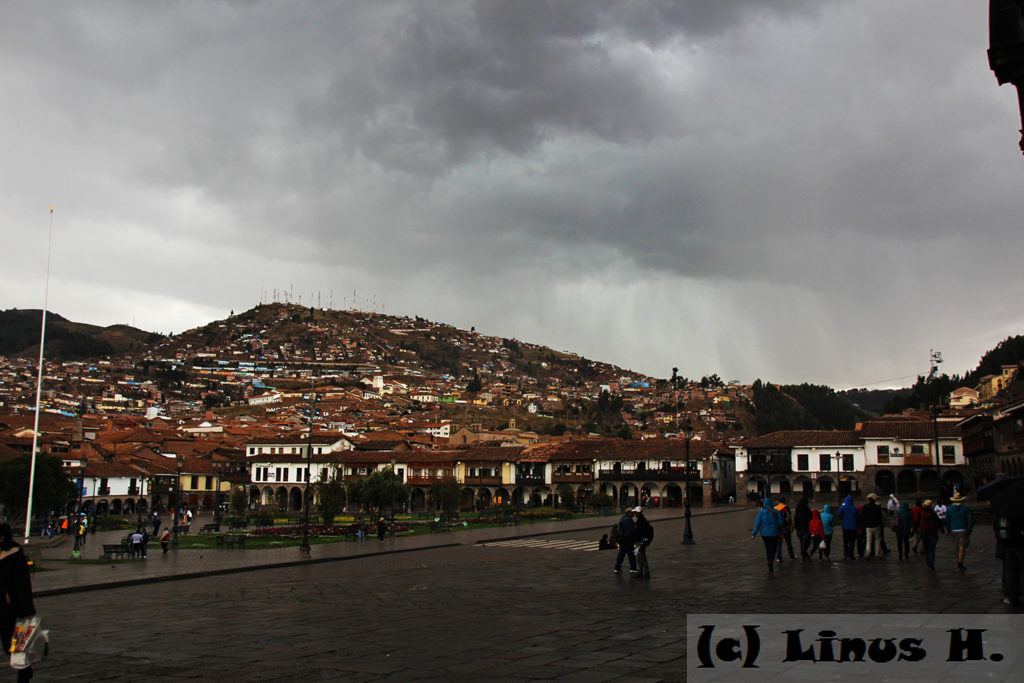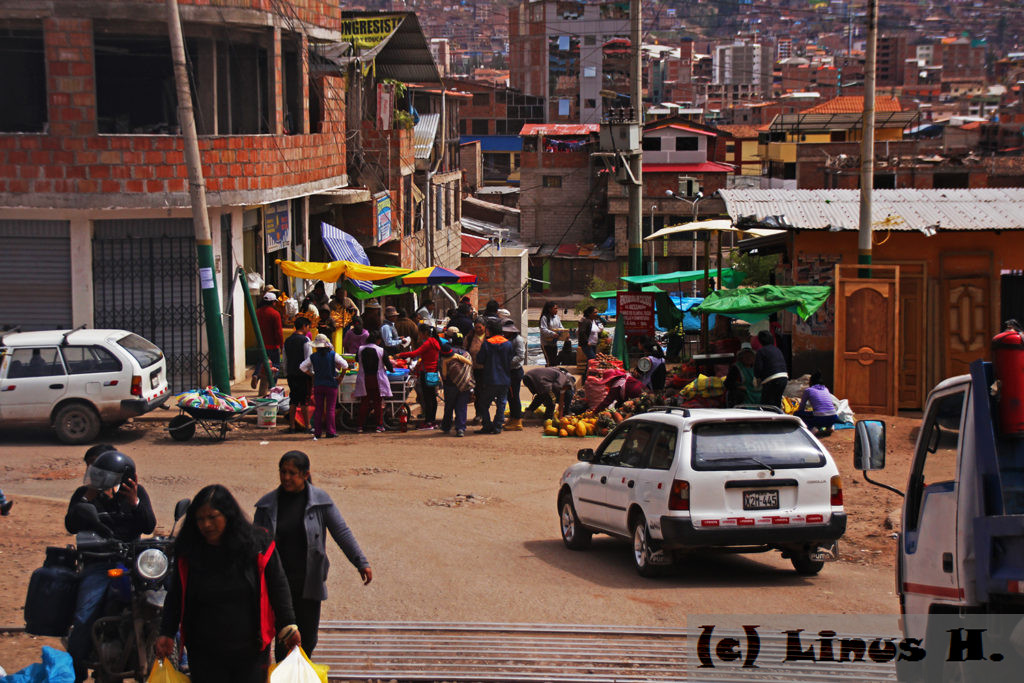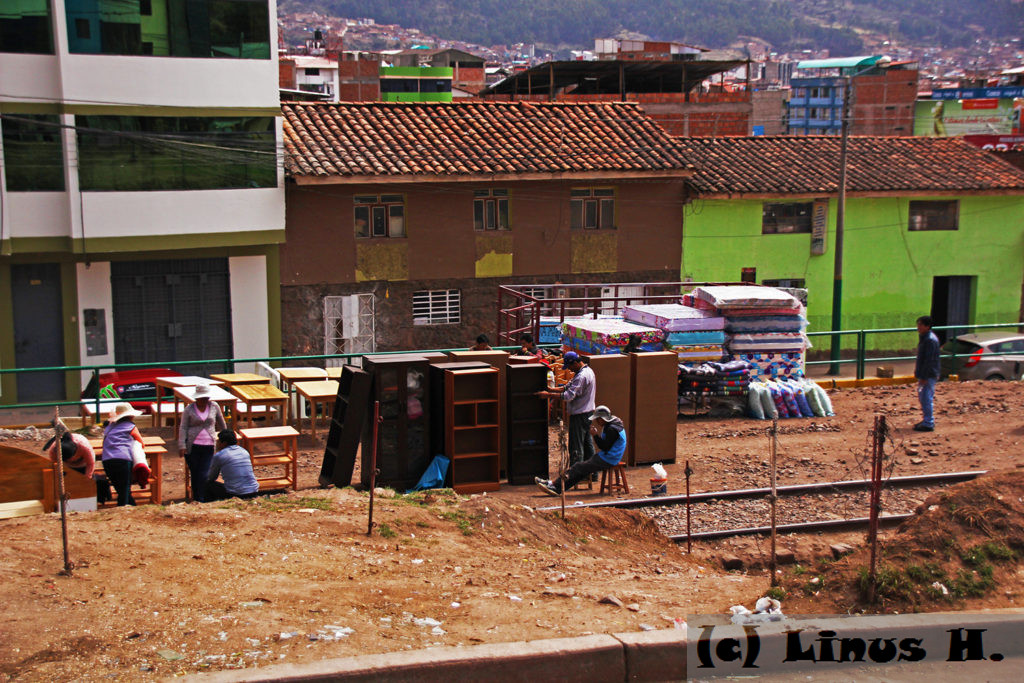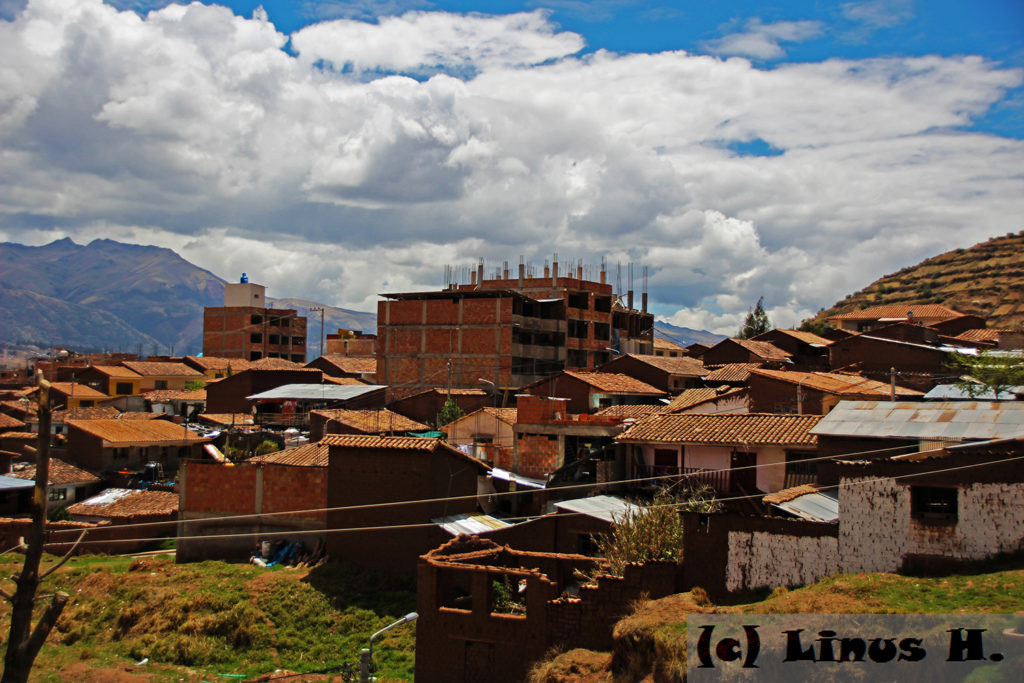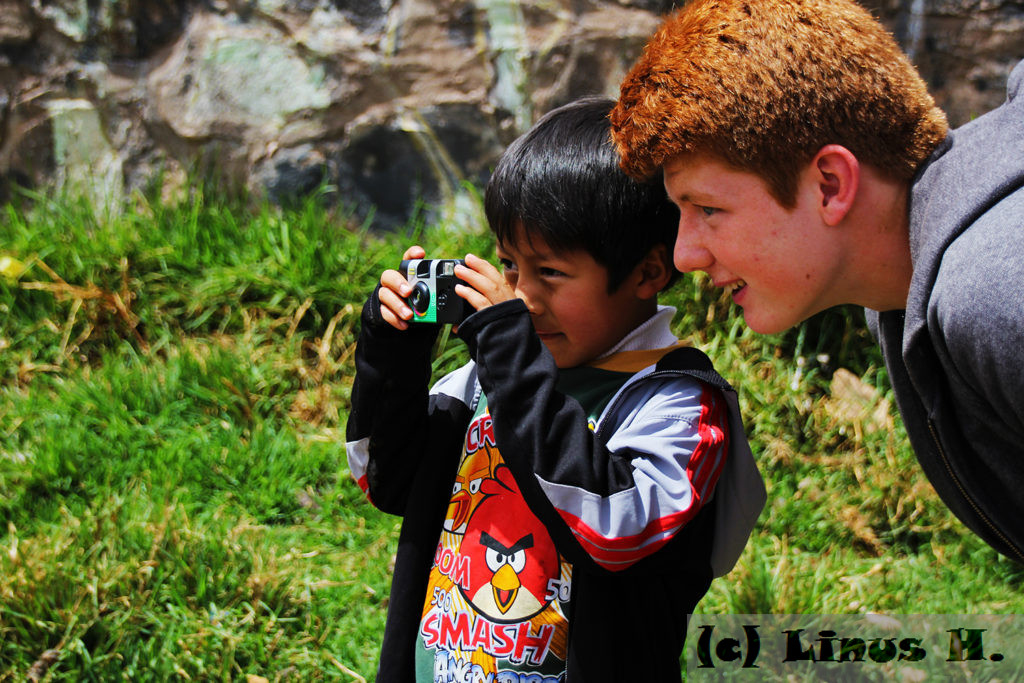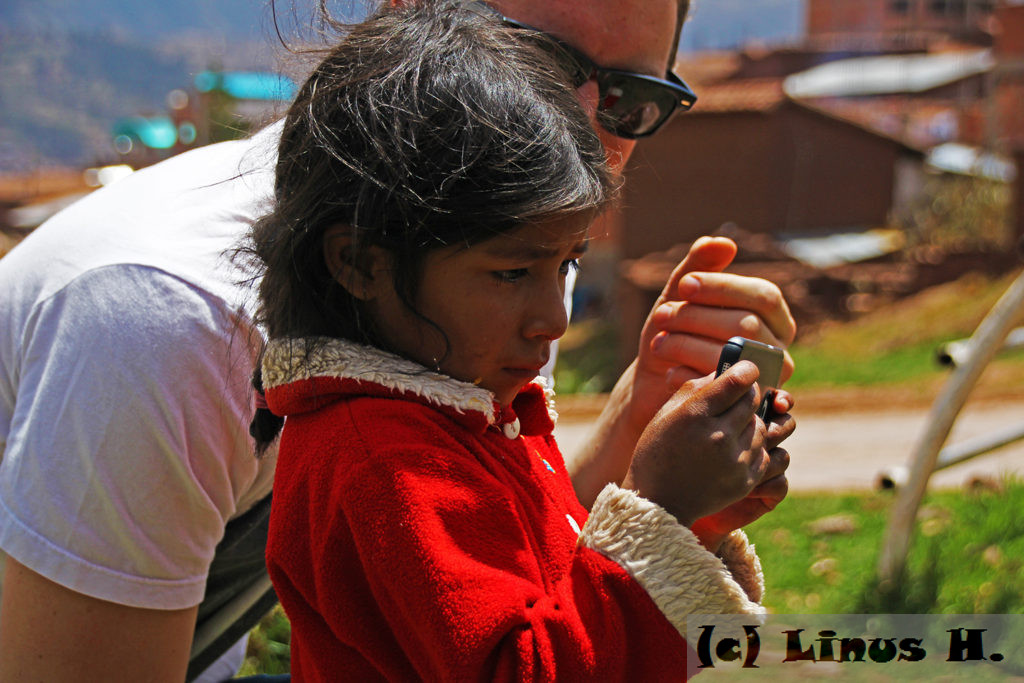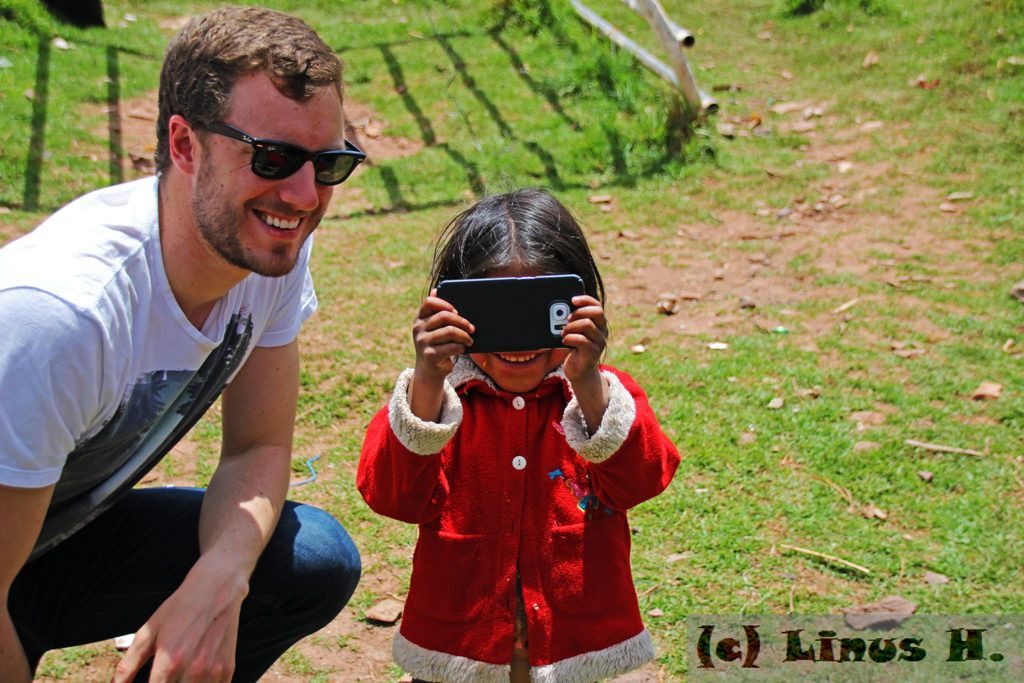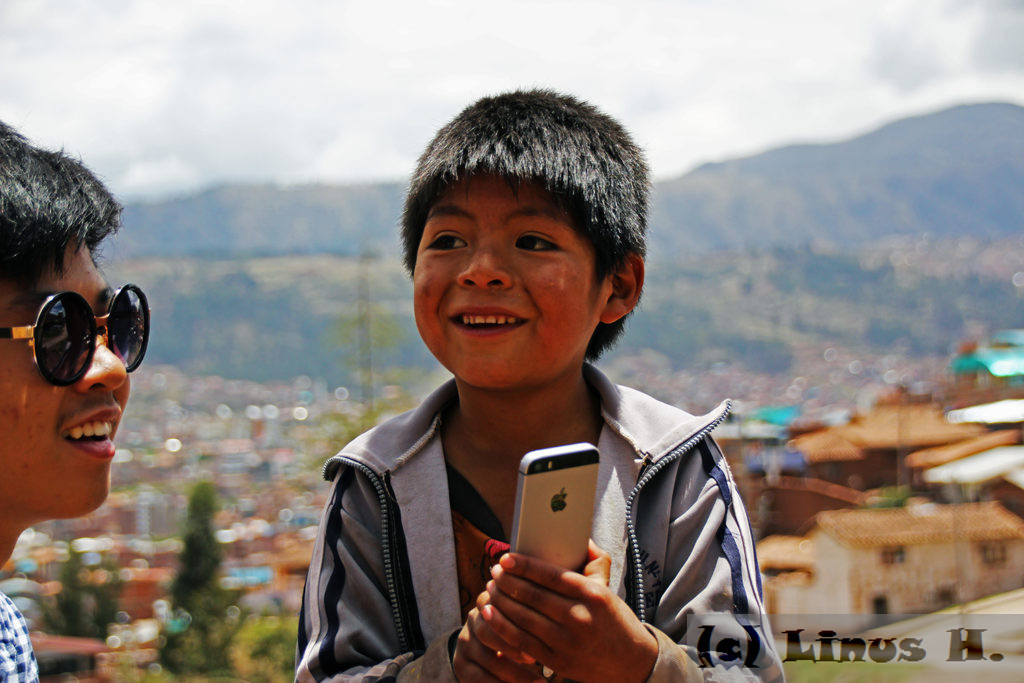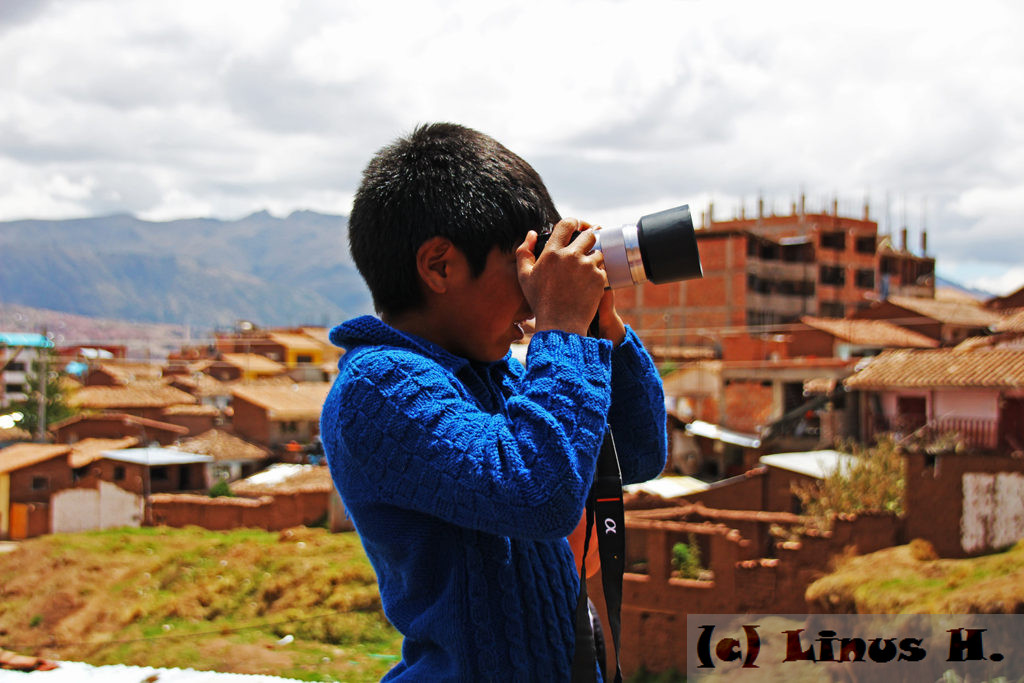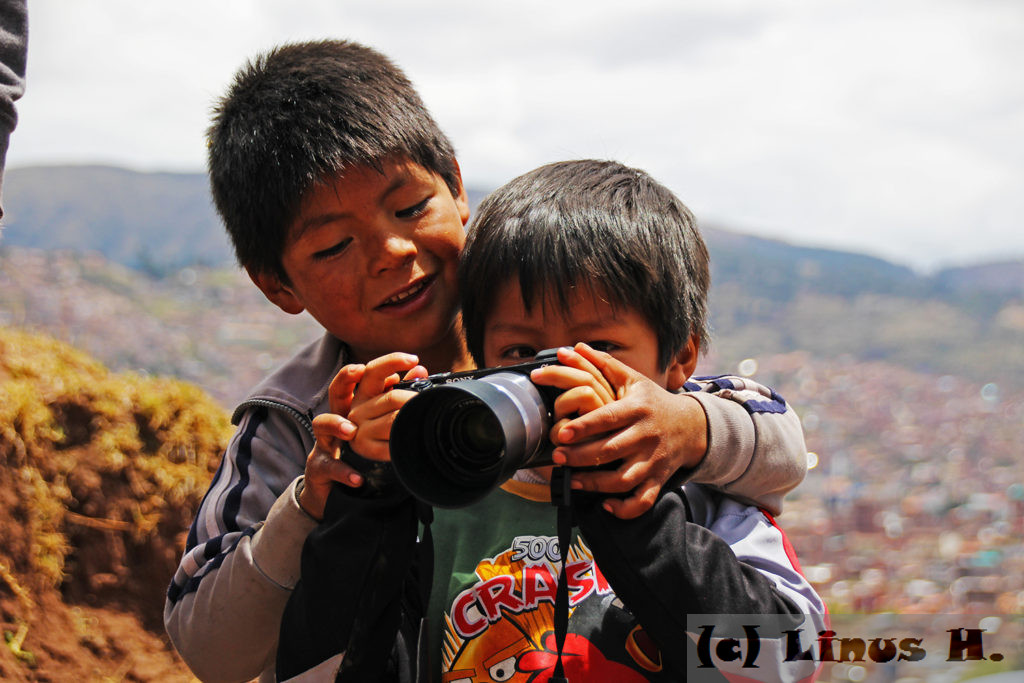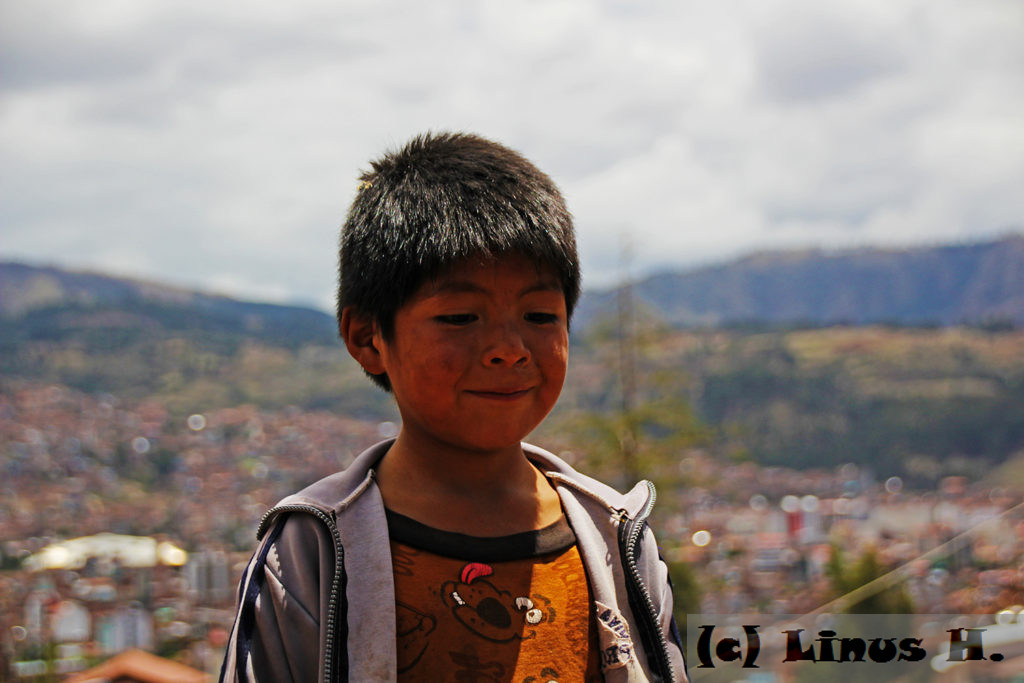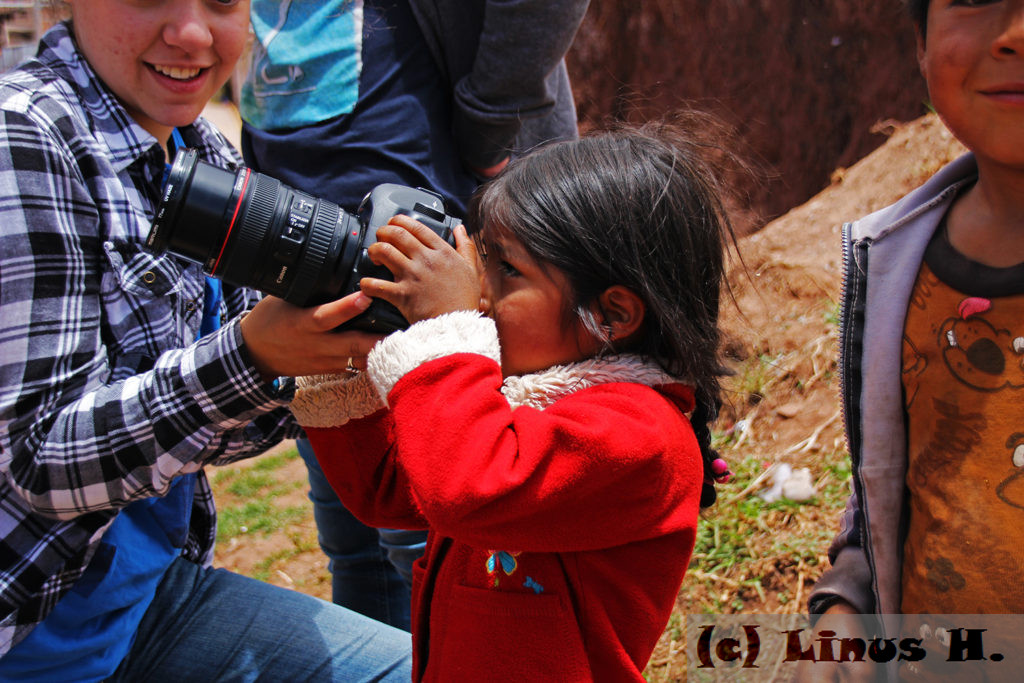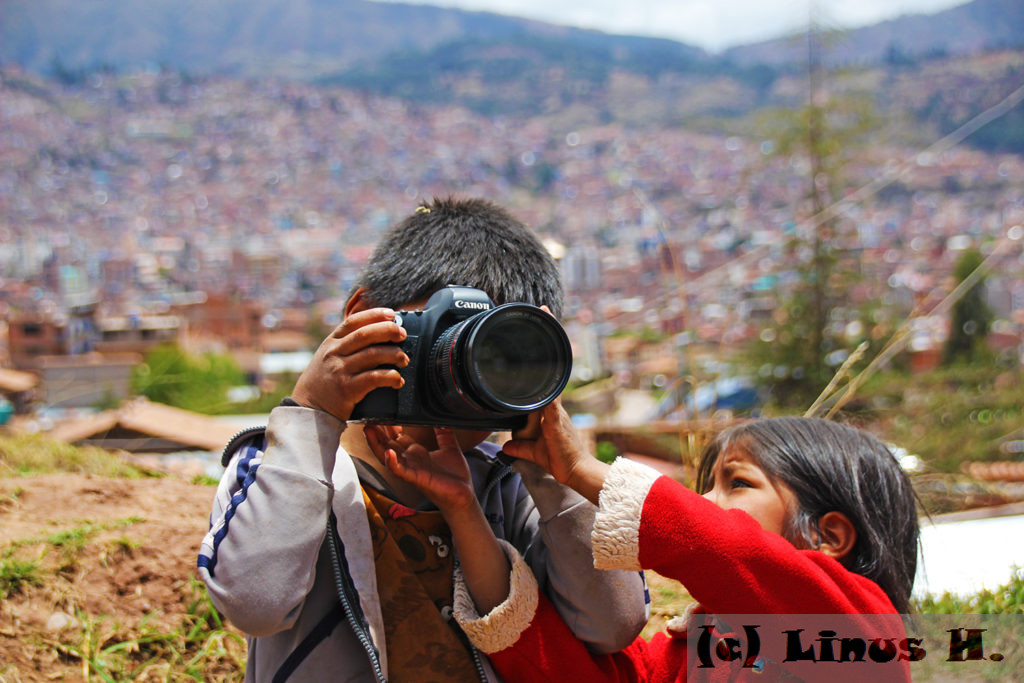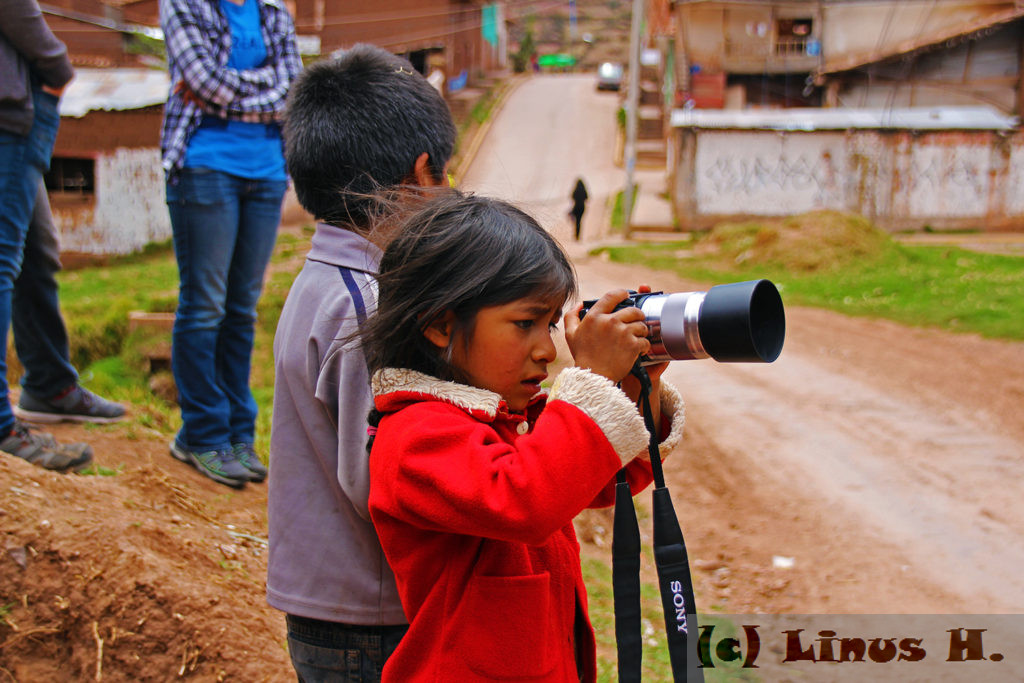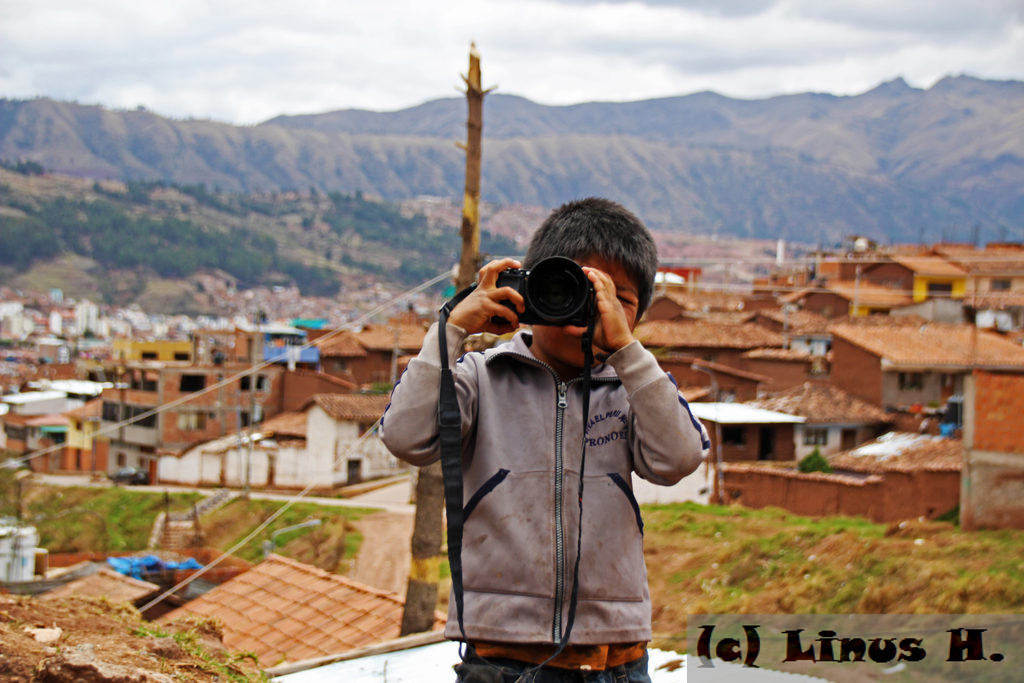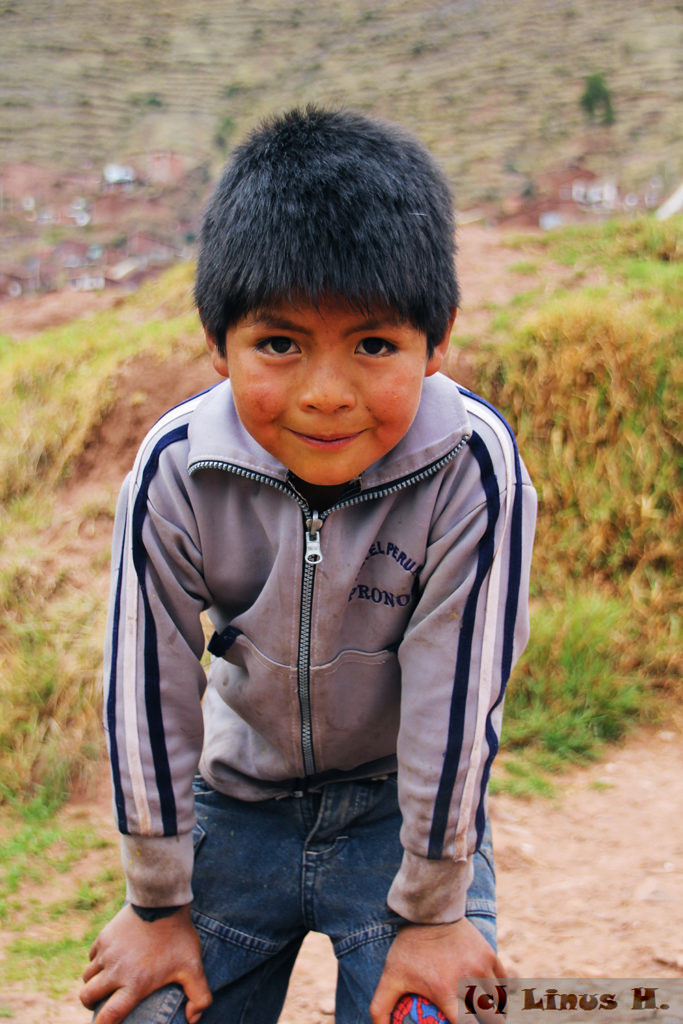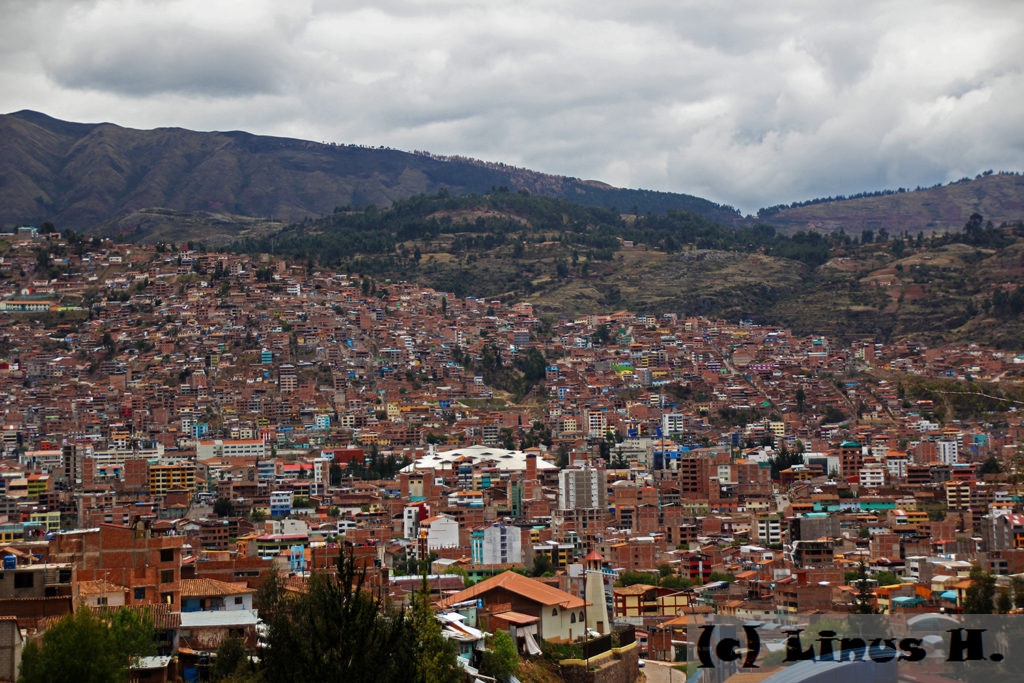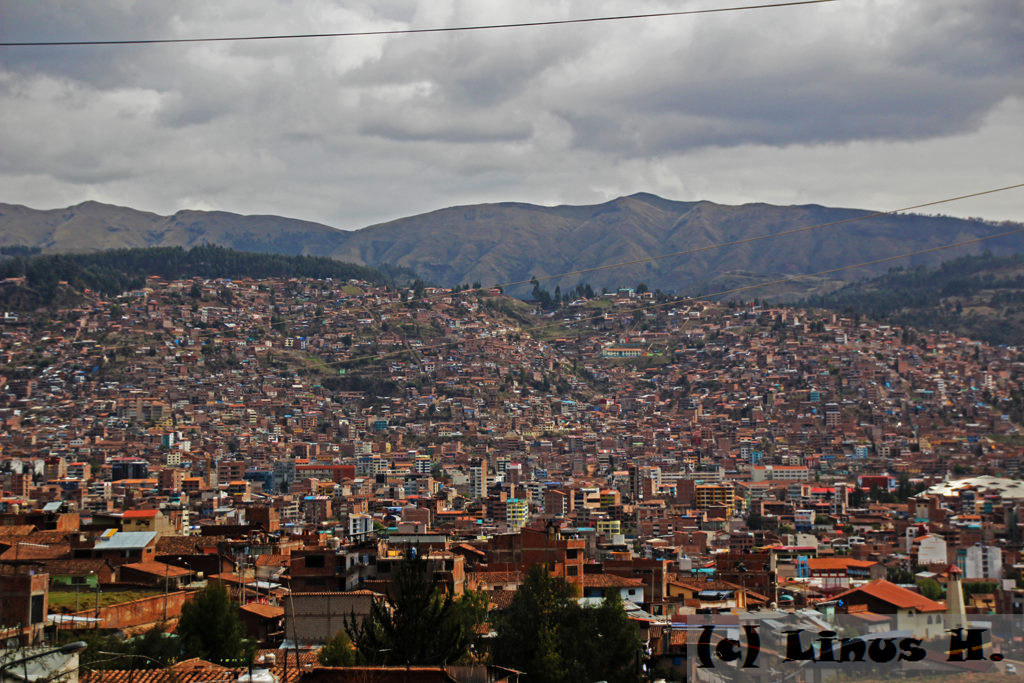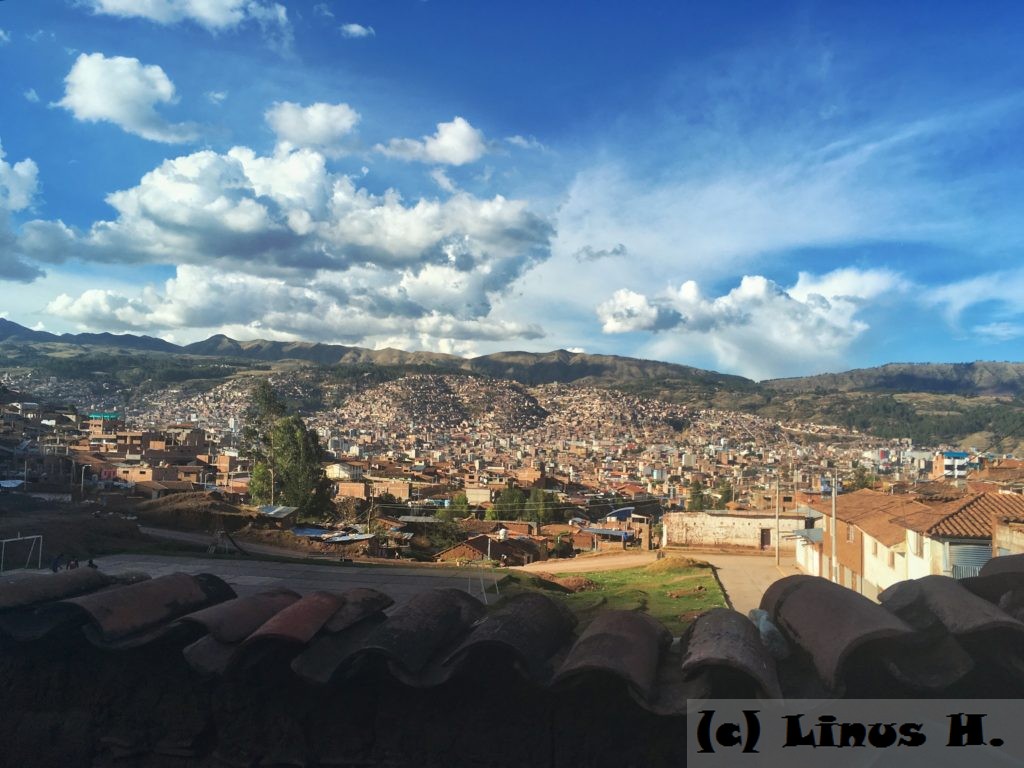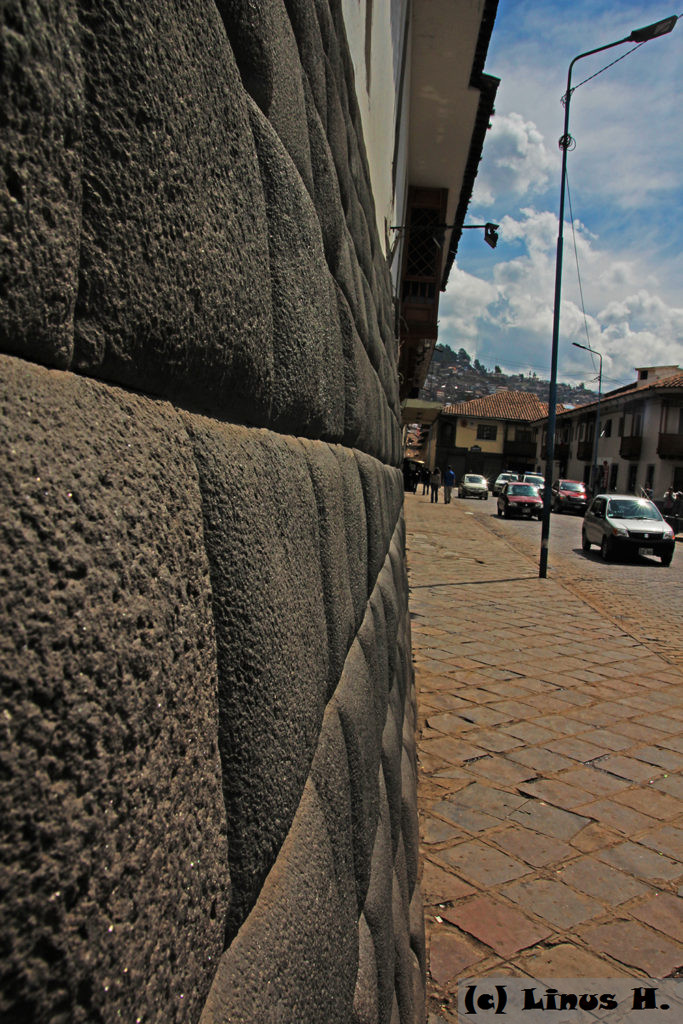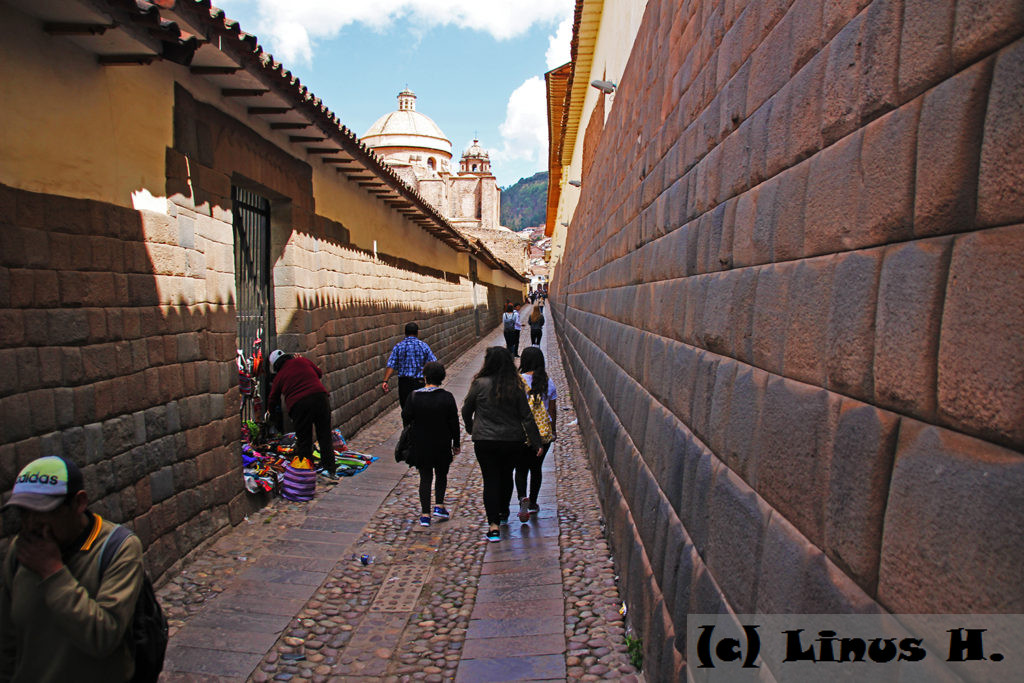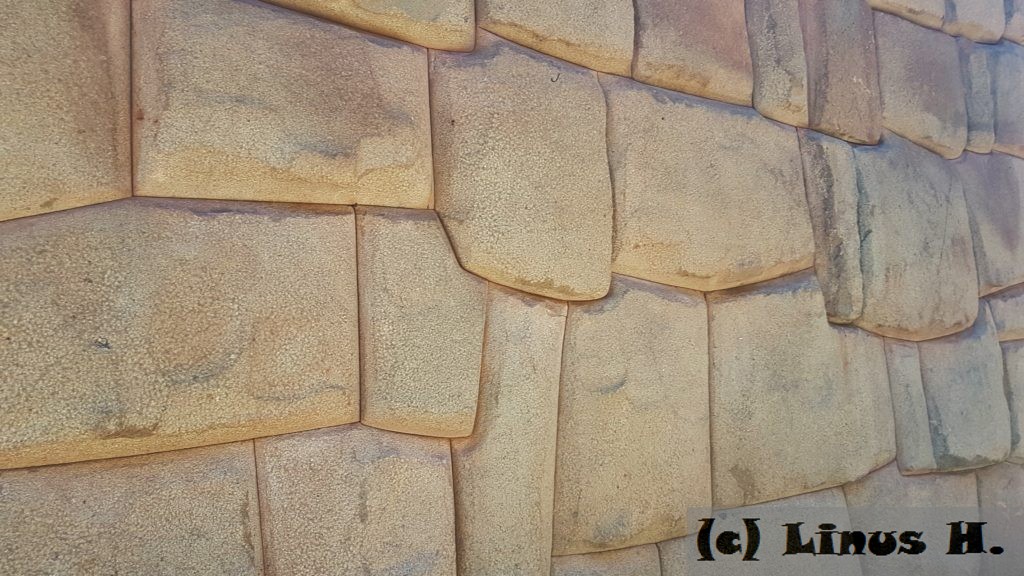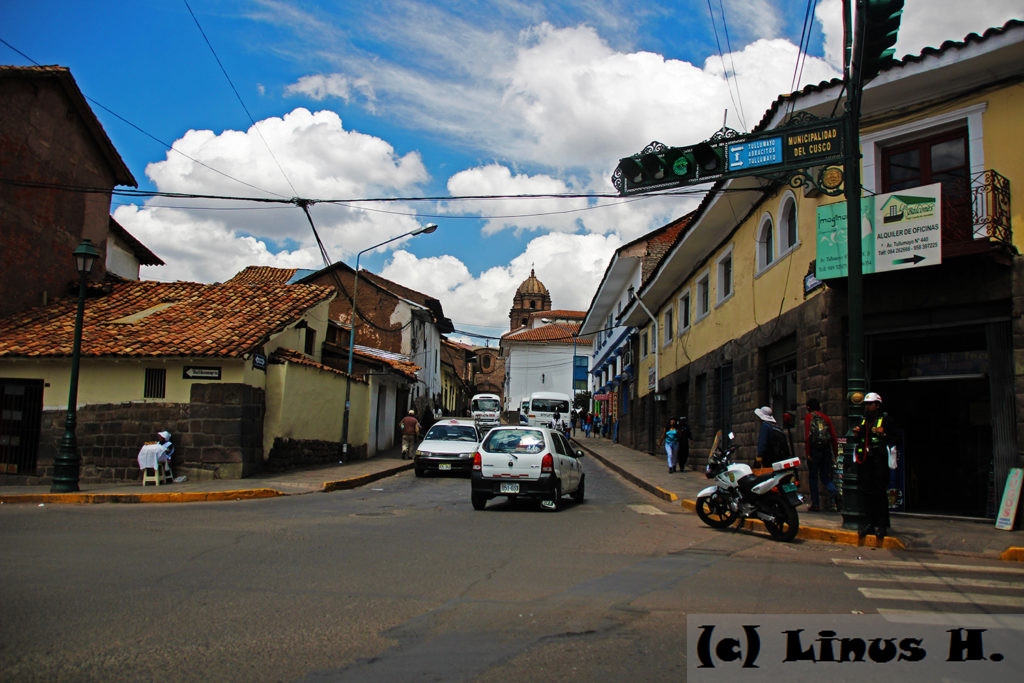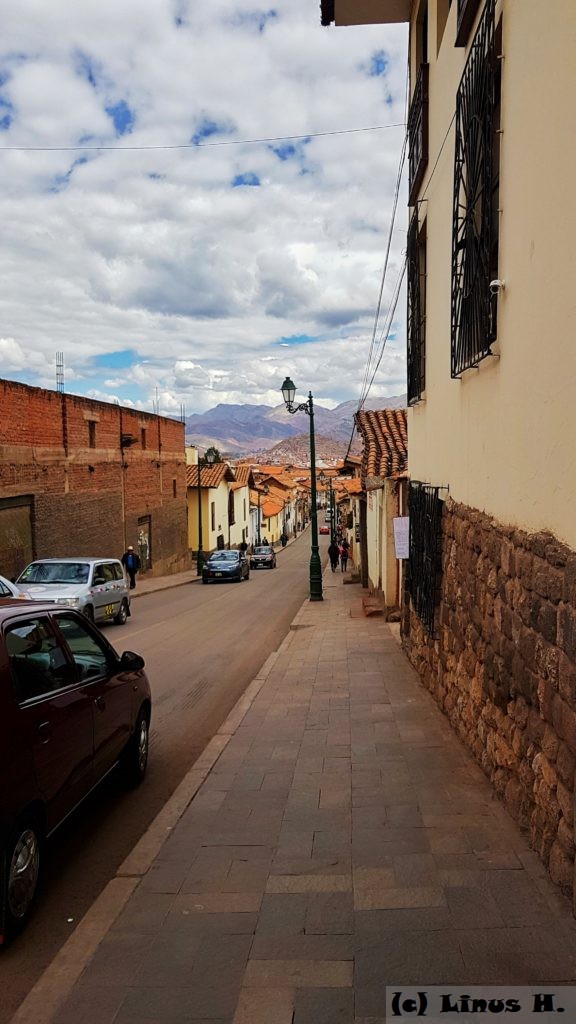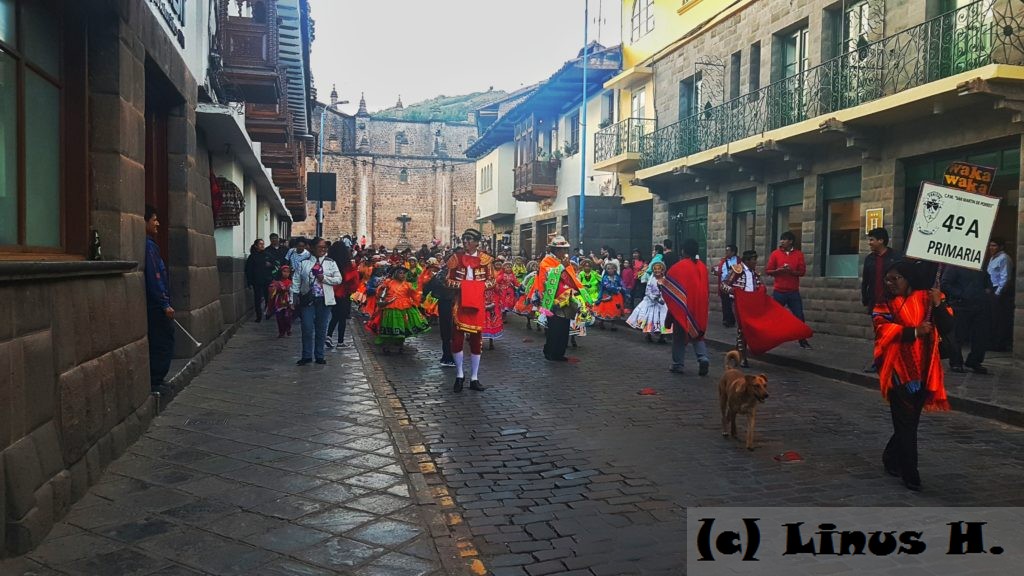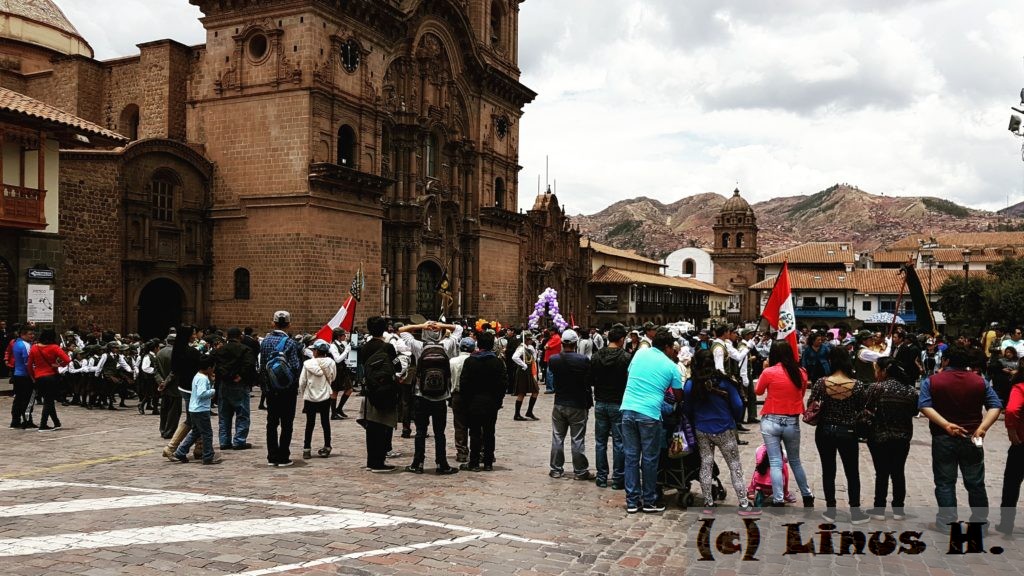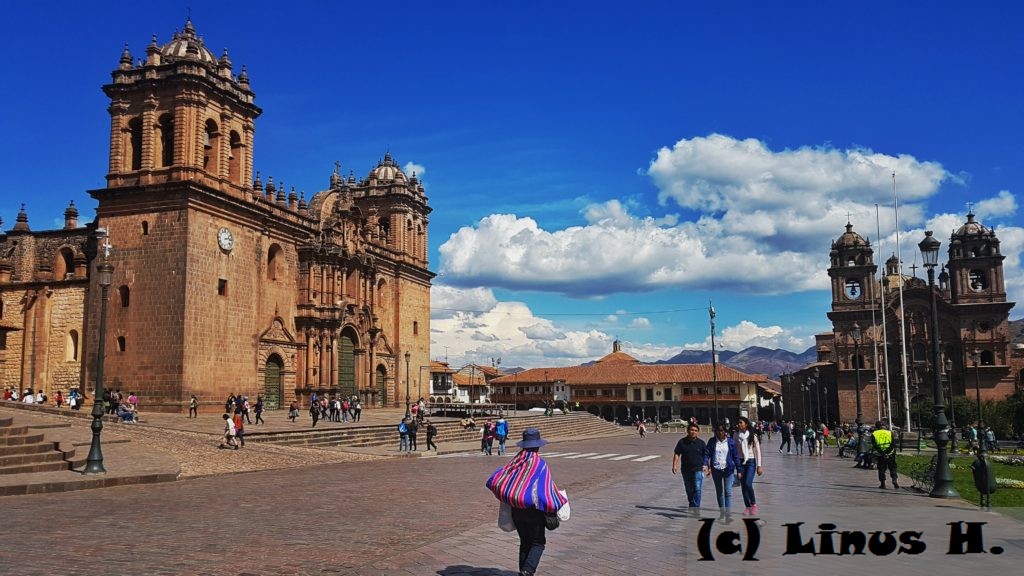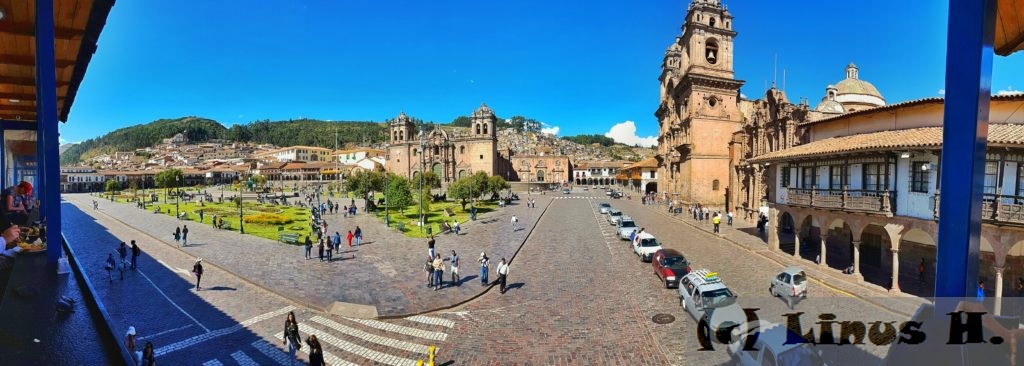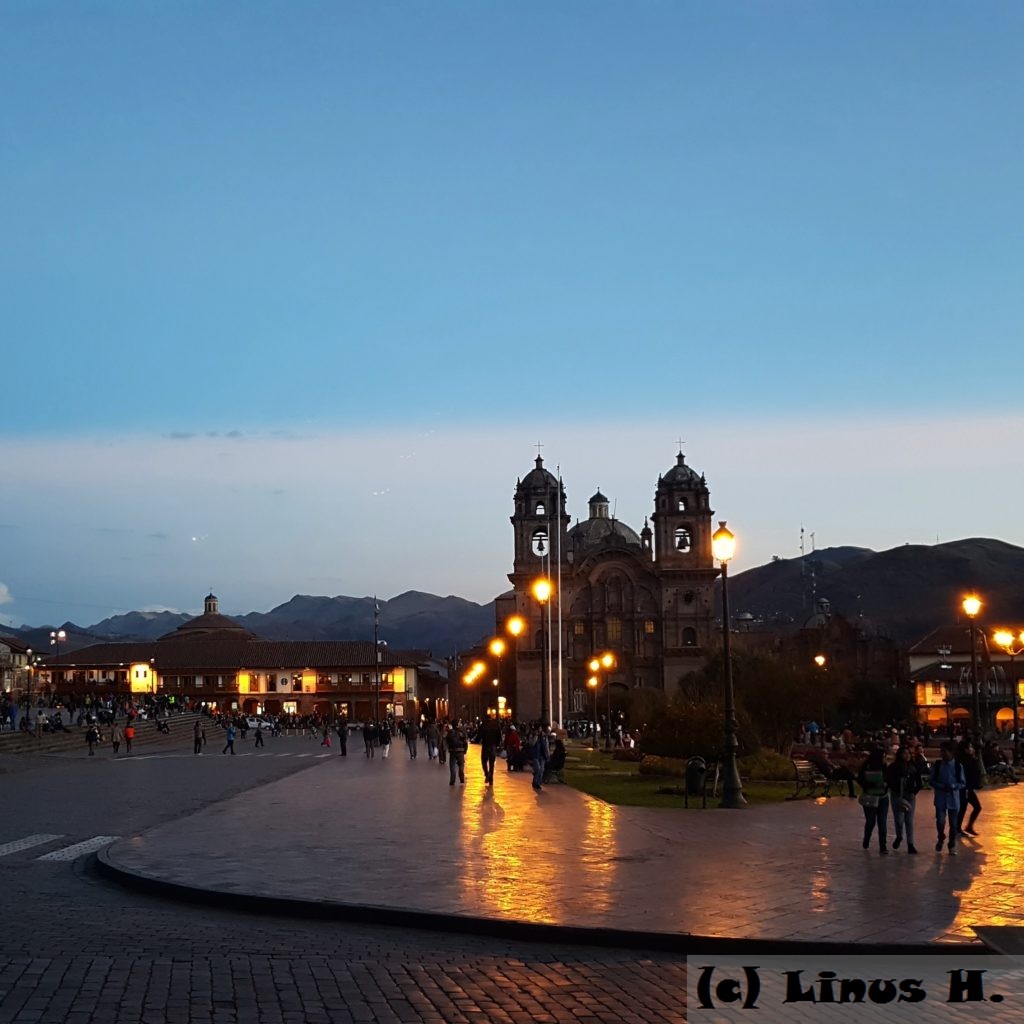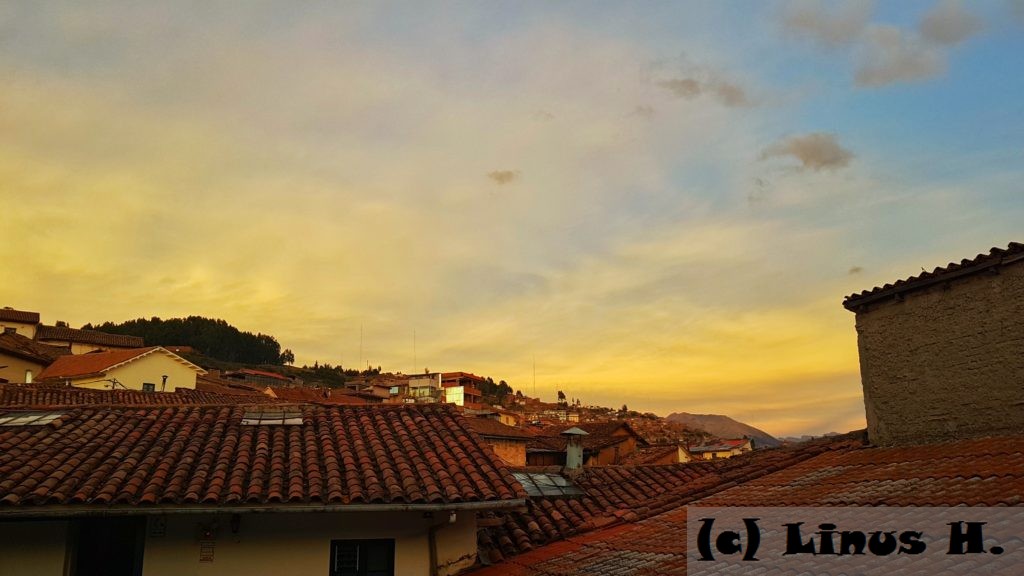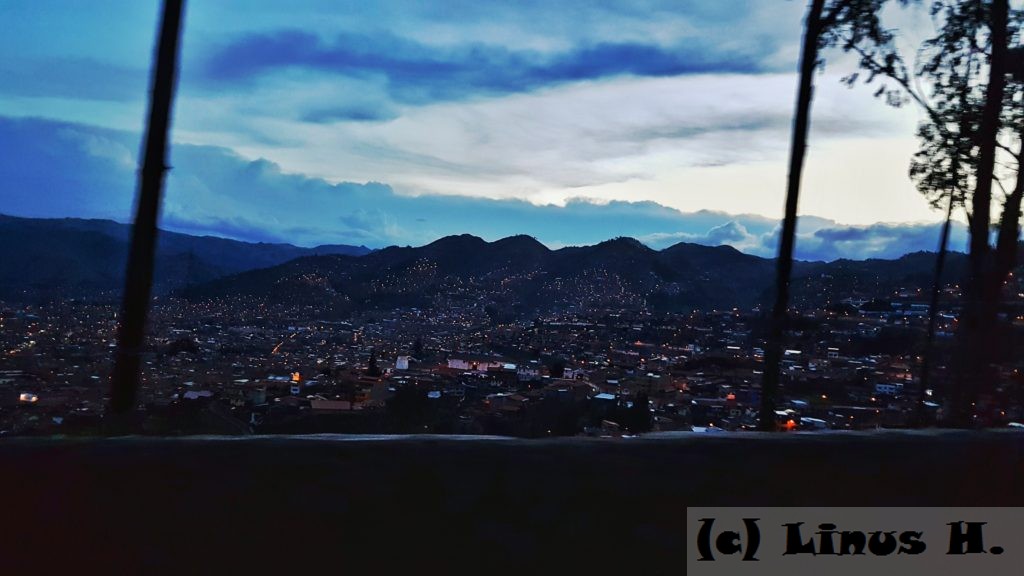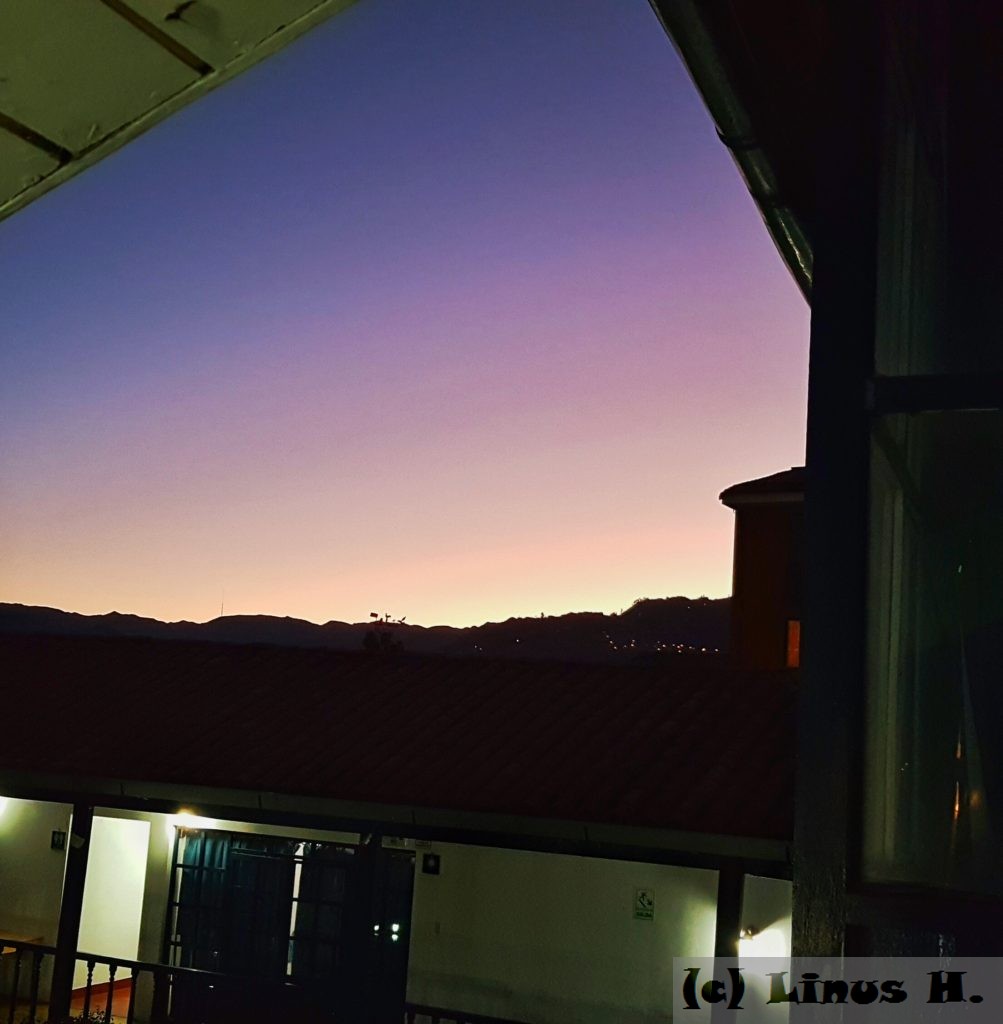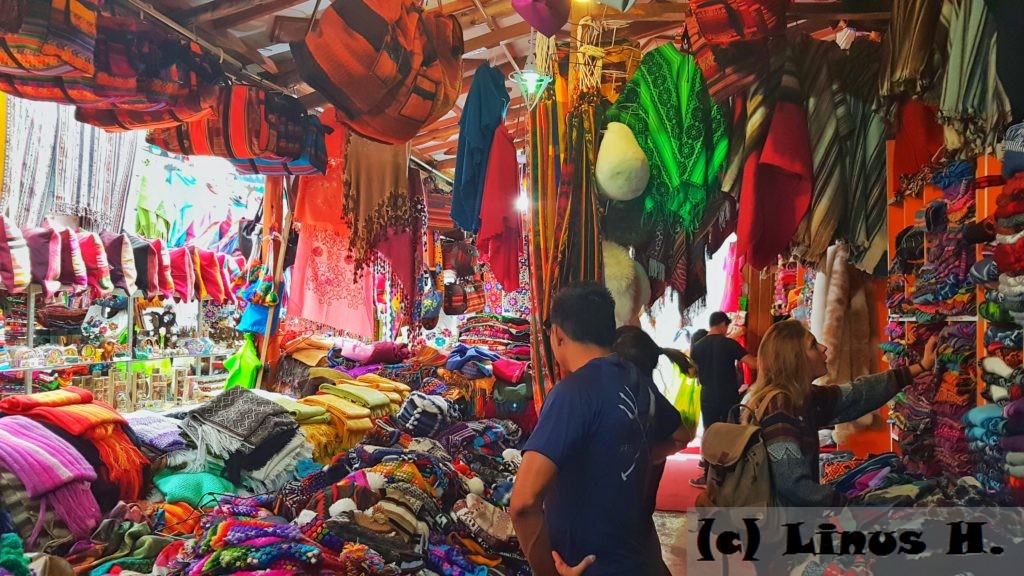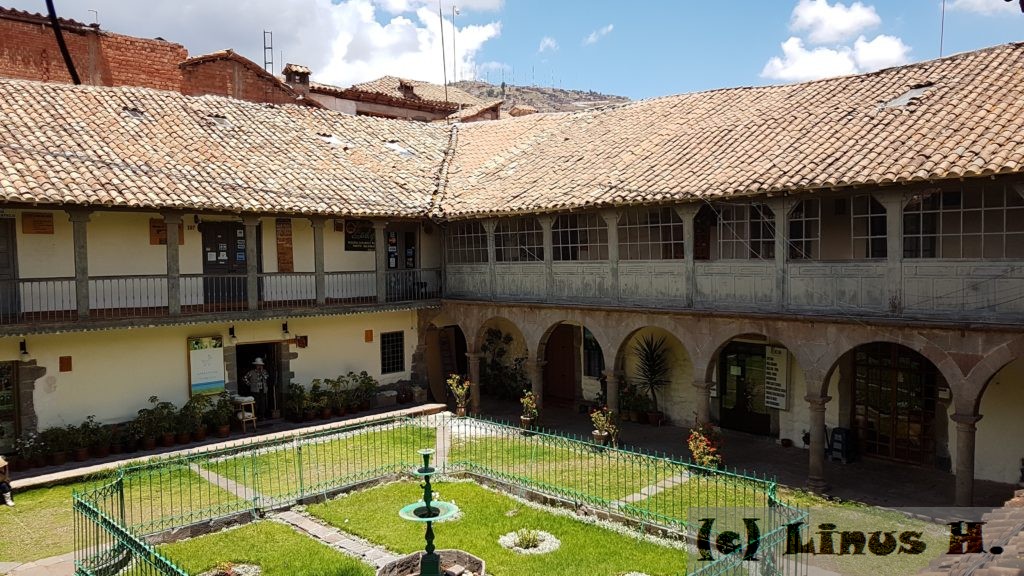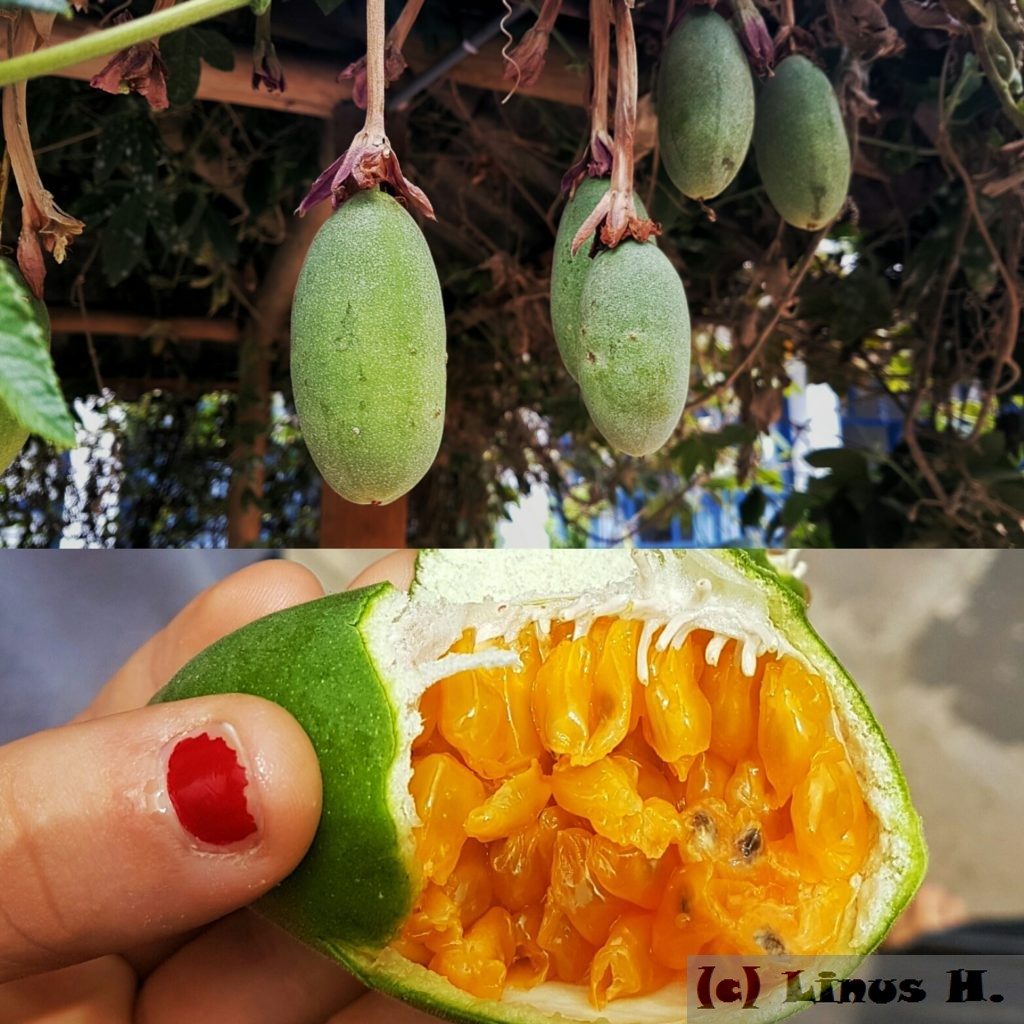Following our term in the small, fairly “un-touristy” town of Urubamba, it was now time to move on to the regions capital, Cusco. It is the fourth largest city of Peru, and lives from tourism. Nonetheless, it is a very nice city, and if you live there for long enough and try, you can find the less touristy “secret” places. Two of my favorites are a burger/sandwich restaurant a bit up the mountain from where I live, and a small, very local Korean place near the Plaza de Armas. We live fairly central, about 3 to 5 minutes by foot away from the PDA. At the main square, there are a collection of good restaurants as well, but as to be expected, they are all quite touristy.
Cusco is a very interesting city, and it sure is picturesque. Here is the view from the complex of buildings in which we have school from Tuesdays to Fridays:
In the first few weeks of our stay in Cusco, it seemed like the rain season had slowly started to arrive – we had rain showers or thunderstorms nearly every afternoon.
The city center of Cusco is kept very clean and orderly, it is the area where the tourists stay and roam around. But as soon as you go five minutes further out of the city center, you will see the real Cusco, with its road (and railroad) side markets.
At the edge of the city, on the mountains, are the “barrios” – neighborhoods. They are communities of intra-national migrants from remote Andean communities to the city, hoping for job opportunities, a better lifestyle and better education for their kids. While they do get education for a few Soles a year in public schools, there are countless problems in these communities – with drugs and alcohol being some of the most severe. We visited the Barrio 7 at the edge of Cusco twice and talked to the locals there. The majority of the adult population of the Barrio are women; the men, usually alcoholics often left their wife and children to themselves. When asked about whether there is a drug problem in these neighborhoods, the lady responded with “yes, of course. A very big problem”. According to her, the normal age for children to start taking Cocaine is at around 9 years old. However, the life in these communities also has a few up sides; most prominently, the residents said, the feeling of community. And while they had been ignored by the government for many years, in recent years they got electricity, paved roads and running water in the barrio.
On one weekend, we took the “Lil’ Lenses Project” to the Barrio 7 – where we give disposable film cameras the local children and let them take photos of each other (while we take photos of them with our own cameras). They were also allowed to use our SLRs; especially the kid in the blue sweater was very enthusiastic about taking photos and actually took quite good shots. It is beautiful to see the joy that we brought to these children that go to school in the morning and sell things at the Plaza de Armas in the afternoon simply through photography.
And here is the view over the city of Cusco from the Barrio 7.
Cusco, which is spelled in many different ways (the most interesting spelling that I found in Cusco itself was Qosqo) was the capital of the Incan Empire, and was called the “City of the Puma” because it had the shape of a Puma. There were over 300 temples in and around Cusco, but they were all destroyed when the Spanish came – we only know about them because the Spanish made a list before reducing them to rubble. However, in the city center you can still find some traces of the Incas. Some of the old houses have foundations of Incan walls.
The streets of Cusco can be quite chaotic. There is a lot of traffic, especially at the peak times, and little obedience to traffic regulations or rules. There are also very few traffic lights in all of Cusco – they are replaced with a lot of manpower, in the vast majority women, who regulate the traffic at peak times. The government of Cusco is a party that considers itself a “movement” and the logo is Machu Picchu with red, yellow and orange rays originating from behind the mountains.
Other than for the traffic, it is quite fun to roam through the streets of Cusco. Here are a few impressions.
However, if you want to get somewhere on time, you should always plan in a little more time than you need – there are parades in Cusco nearly every day, and it is not uncommon to bump into one.
This perfectly leads us to the Plaza de Armas. It is the main square in Cusco, and is quite large. Along the sides, there are countless neat (but touristy) restaurants, cafes and a Starbucks. If you want a less touristy square, you just have to go one street further and to the right to the Plaza Regocijo. Here’s the Plaza de Armas:
Cusco seems to have a fairly vivid nightlife, and there are many nice restaurants that you can visit in the evening. Keep in mind that the evening starts at five pm, after all Cusco is quite close to the equator. By 5:45 it is completely dark. Many shops and some restaurants don’t even open before noon or the afternoon and stay open well into the night; this also goes for the roadside kiosks that sell water and snacks at reasonable prices (water is 1,30 soles).
Speaking of shops…. there are a wide variety of alpaca shops, especially if you get away from the main roads a little. It is possible to buy nice alpaca sweaters for around 25 Soles.
I can also recommend the Choco Museo – it is definitely worth to take part in one of the chocolate making workshops; the people that organize it are very passionate for what they teach and have a great sense of humor – plus, you get chocolate at the end.
And if you don’t find food in a nice restaurant or cafe – remember that you’re in the tropics. I’ve seen lemons and some other fruits grow throughout the city. And here’s a strange fruit that grows at the place we have school in – it tastes very sour.
